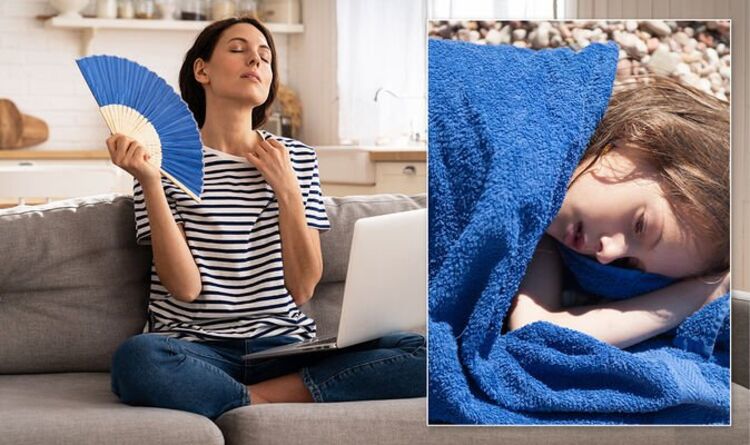India: Heatwave leaves over a dozen dead from heat stroke
We use your sign-up to provide content in ways you’ve consented to and to improve our understanding of you. This may include adverts from us and 3rd parties based on our understanding. You can unsubscribe at any time. More info
As the weather gets hotter and the sun makes more of an appearance, many Britons will be keen to get outside and soak it up. However, spending too much time in high temperatures can lead to heat stroke.
Heat stroke is a medical condition that occurs when the body is unable to control its internal temperature.
The signs and symptoms of heat stroke can vary from mild to very serious.
They are often very similar in both adults and children, though kids can experience some slight differences.

What are the symptoms of heat stroke in adults?
Heat stroke often begins as heat exhaustion, which can be treated by cooling someone down.
However, if not treated the NHS warns the condition can turn to heat stroke which can be a medical emergency.
The signs of heat exhaustion include:
- a headache
- dizziness and confusion
- loss of appetite and feeling sick
- excessive sweating and pale, clammy skin
- cramps in the arms, legs and stomach
- fast breathing or pulse
- a high temperature of 38C or above
- being very thirsty
DON’T MISS
John Thaw: Actor died from oesophagus cancer – condition explained [EXPLAINER]
Heart disease: Depression symptoms linked says study [REPORT]
Menopause: See a doctor if symptoms effect your ‘quality of life’ [COMMENT]
You should also look out for more intense symptoms, as these could signify the condition has worsened to heat stroke.
The signs and symptoms of heat stroke include:
- feeling unwell after 30 minutes of resting in a cool place and drinking plenty of water
- not sweating even while feeling too hot
- a high temperature of 40C or above
- fast breathing or shortness of breath
- feeling confused
- a fit (seizure)
- loss of consciousness
- not responsive

What are the symptoms of heat stroke in children?
The signs and symptoms of heat stroke in adults and children are very similar.
However, the NHS adds: “Children may become floppy and sleepy.”
If your child is showing signs of heat exhaustion, you should quickly move them inside and cool them down.
Symptoms that suddenly worsen should be treated as an emergency. Heat stroke must be treated as soon as possible.
Get the latest three-day weather forecast where you live. Find out by adding your postcode or visit InYourArea
How to cool someone down
The NHS recommends four key steps to cool someone down if you think they may have heat exhaustion.
You should move the person to a cool place out of the sun.
Get them to lie down and raise their feet slightly.
Make sure they drink plenty of water. The NHS says sports or rehydration drinks are also okay.
Try to cool the person’s skin by spritzing or sponging them with cool water. You can also use a fan or apply cold packs to the armpits and neck.
Make sure you never leave a person alone during this time.
Source: Read Full Article
